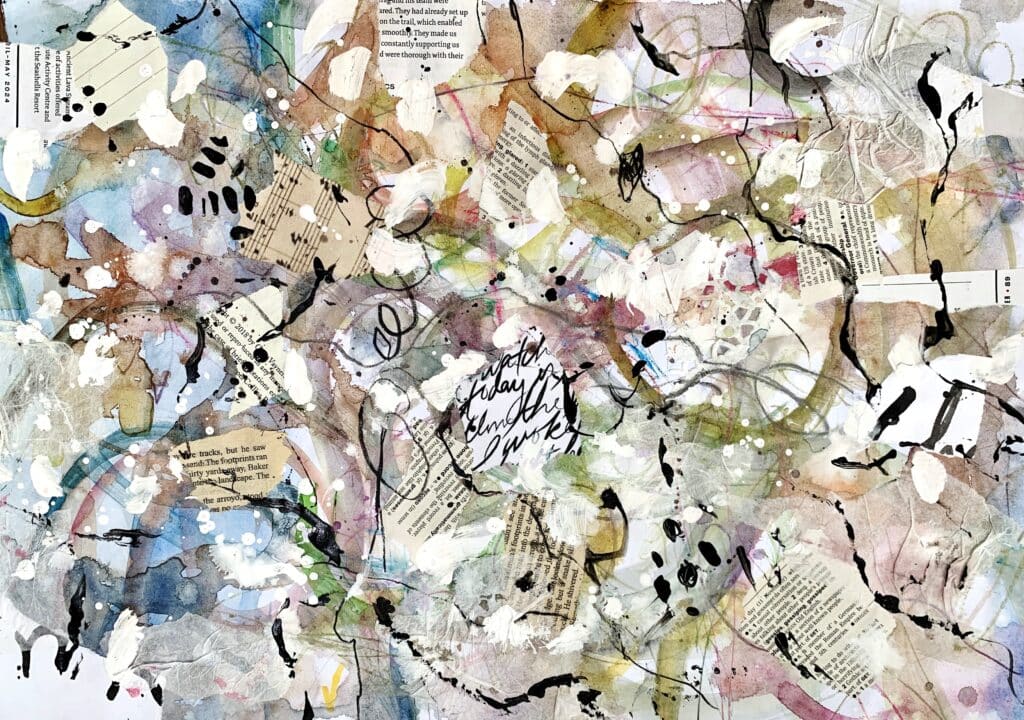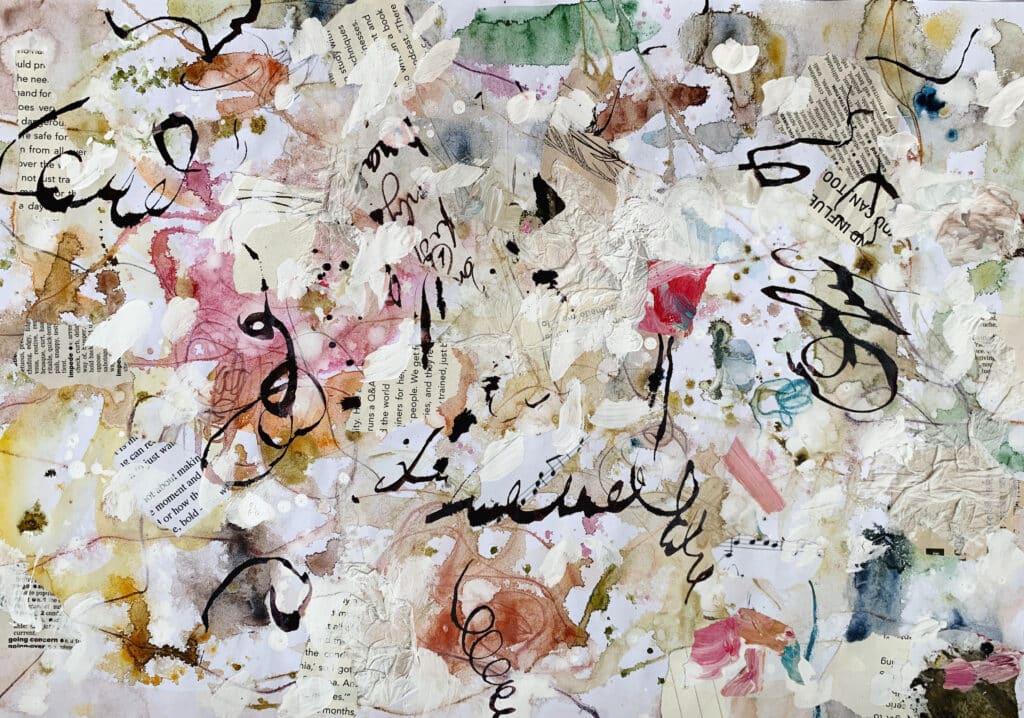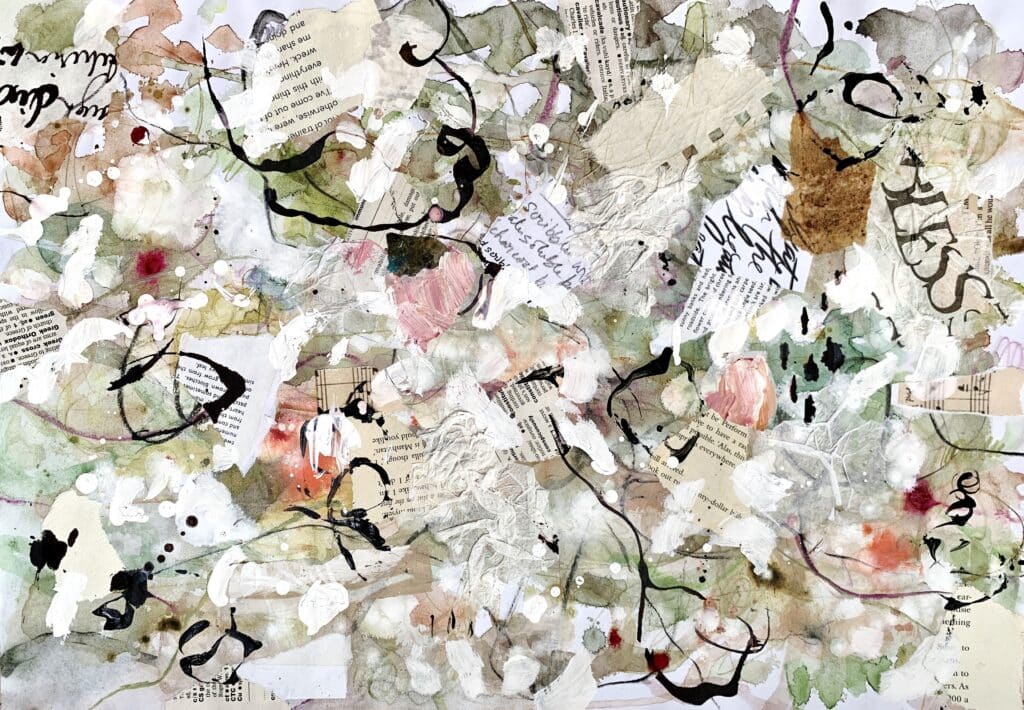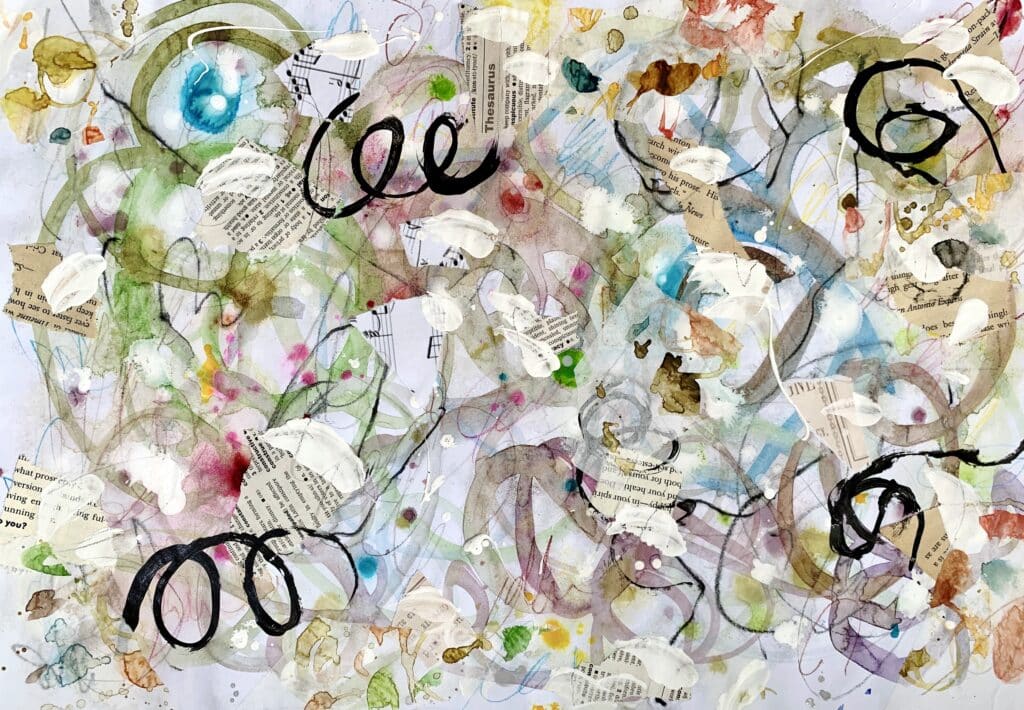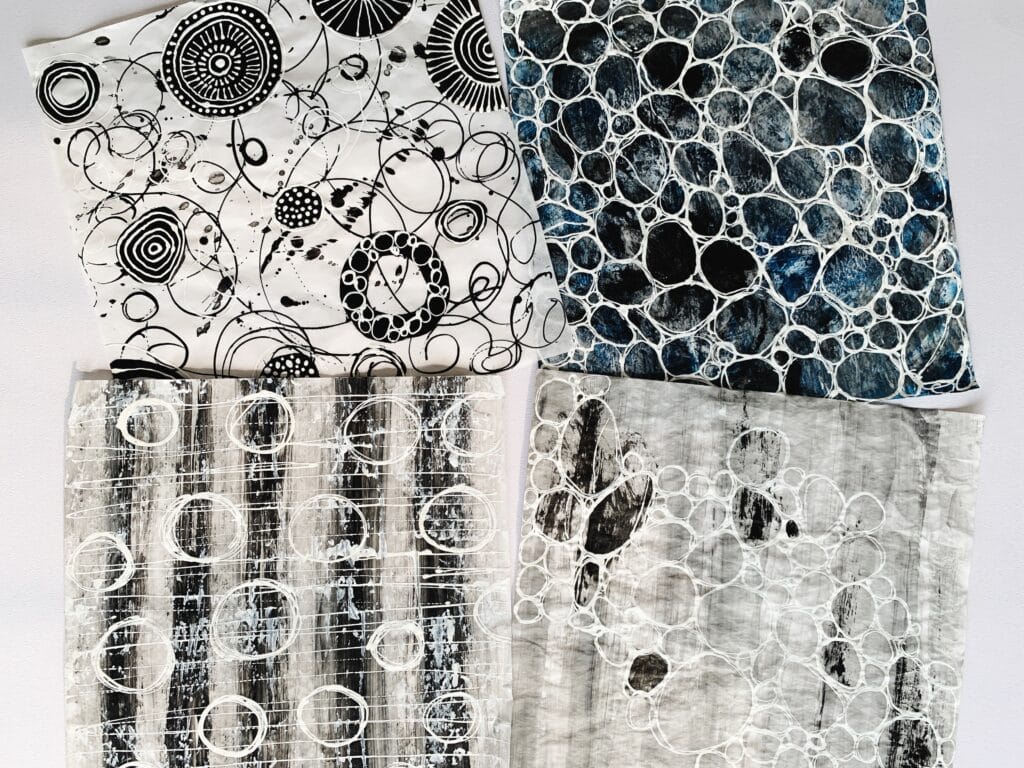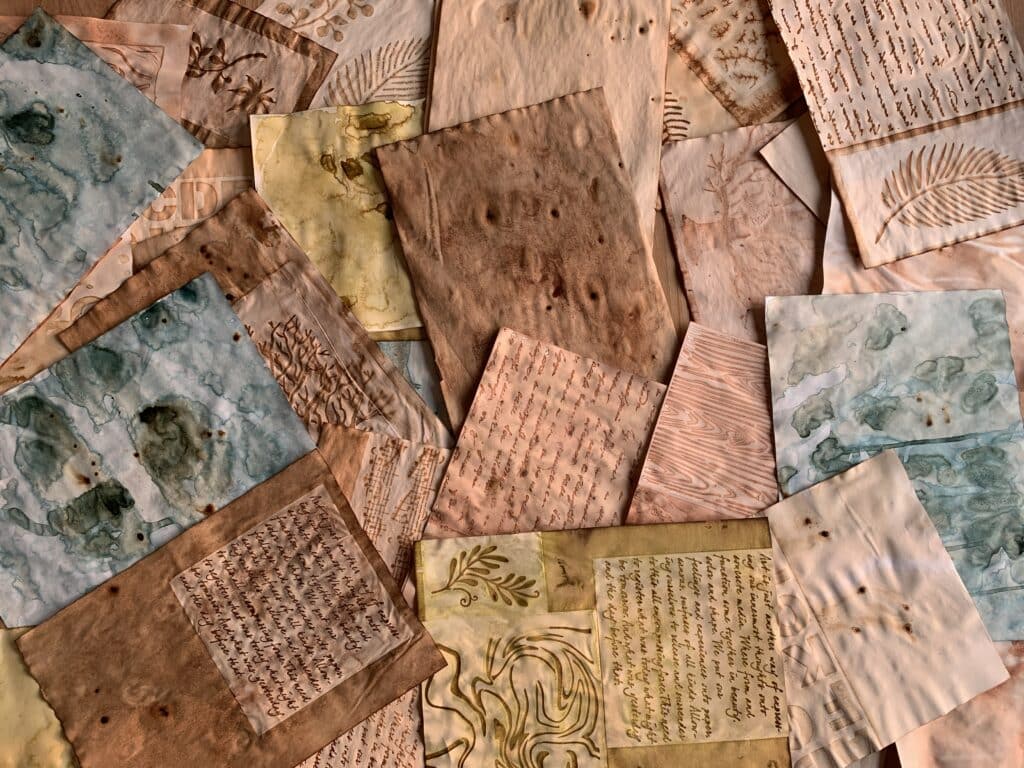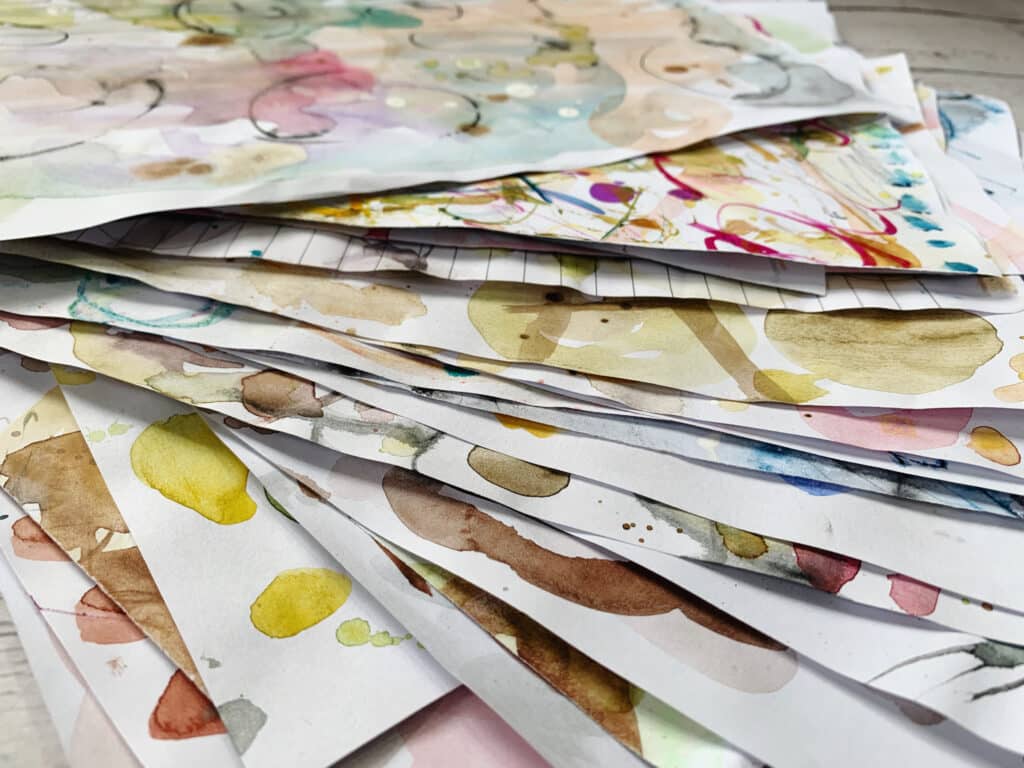Collage master sheets are a wonderful way to explore and express your emotions through layers of color, texture, and pattern. Inspired by the techniques I learned from Robin Marie, I’ve infused this process with my own personal meanings and emotional depth.
This technique is about more than just creating a background—it’s an opportunity to let your intuition guide you as you build a foundation rich with meaning and visual interest.
In this blog post, I’ll take you through a step-by-step process to create a whimsical and expressive collage master sheet, where each layer adds depth and emotion to your artwork. From the fluidity of watercolor to the tactile pleasure of collage, you’ll discover how to infuse your art with personal significance while creating a vibrant and dynamic piece.

Steps for Creating a Whimsical Collage Master Sheet
1. Flowing Watercolors
- What to Do: Apply random watercolors across your sheet, choosing either a variety of colors or sticking to a monochromatic palette. Spray water onto the paint, allowing the colors to spread and flow, creating organic, flower-like shapes.
- Emotional Pointer: Embrace the unpredictability of this step—let go and allow the colors to flow freely. This is your opportunity to let the paint move naturally, just like emotions that can’t be fully controlled.
2. White Acrylic Drips
- What to Do: While the watercolor is still wet, drip some high-flow white acrylic paint over the surface. Let the paint interact with the wet paper, creating a beautiful blend of textures.
- Emotional Pointer: The white acrylic adds a layer of contrast and light, symbolizing clarity or moments of insight within the emotional flow of your piece.
3. Expressive Scribbles
- What to Do: Use a regular pencil, Stabilo All, or watercolor pencils to scribble across the page. Let your hand move freely, adding spontaneous lines and marks.
- Emotional Pointer: This step is about raw expression—don’t overthink it. Let your emotions guide the pencil, creating marks that capture your inner thoughts and feelings.
4. Inks and Drips
- What to Do: Add various inks such as Distress inks, alcohol inks, or acrylic inks to your piece. Spray water over the inks, allowing them to drip and blend together. For an additional touch, you can add more white high-flow acrylic drips.
- Emotional Pointer: The inks bring intensity and vibrancy, representing the ebb and flow of emotions. Allow them to mix and interact naturally, just as emotions often do.
5. Collage with Vintage Papers
- What to Do: Incorporate neutral-colored collage elements like book pages, ledger paper, or vintage teabag paper. Layer these over your inked background, focusing on areas that need grounding or balance.
- Emotional Pointer: Collaging is like adding pieces of a story to your art. Choose papers that evoke a sense of nostalgia or calm, grounding the more fluid and expressive layers underneath.
6. Organic Black Marks
- What to Do: Use a branch or an organic brush dipped in black ink or acrylic to create marks across the page. You can also experiment with asemic writing or random marks, allowing them to cross over the edges of your collage pieces.
- Emotional Pointer: These marks add rhythm and structure to your piece, symbolizing boundaries or moments of clarity amidst the chaos. Let them unify the elements, bringing a sense of cohesion.
7. Subtle White Swipe
- What to Do: With your fingertip, swipe some white acrylic paint over the collage areas and across the entire sheet. This final layer softens the overall composition, bringing lightness and balance to your piece.
- Emotional Pointer: This step represents finding peace and harmony after the intense process of creation. The soft, white swipes act as a calming influence, tying everything together and allowing the emotional journey of your collage to settle.
Step 8: Collage with Inky Deli Papers
What to Do: Once everything has dried, collage transparent inky deli papers onto your piece. Place them strategically to allow the layers underneath to show through, adding a subtle yet impactful layer of color and texture.
Emotional Pointer: This step is about adding depth and complexity, much like layering experiences in life. As you place each piece, think about how it can reveal hidden emotions or memories, contributing to the rich tapestry of your artwork.
This process is a beautiful way to engage with your emotions while exploring different textures, colors, and materials. Each step in creating this collage master sheet is an opportunity to let your creativity flow freely and intuitively, resulting in a piece that is not only visually stunning but also deeply personal.

